How Ayrton Senna’s timeless style evolved and continues to inspire today
Ayrton Senna’s legacy blends legendary wet weather mastery with a magnetic presence and timeless style, creating a Formula 1 icon whose influence reaches far beyond the track into culture, elegance, and inspiration.
Ayrton Senna’s legacy is measured in speed, precision and timeless style. Across 161 Grands Prix, he claimed 41 wins, 65 pole positions and three World Championships – but statistics only tell one part of the story. Senna raced with a rare blend of instinct, precision, and absolute commitment, qualities that set him apart in every lap he drove.
From his stunning rookie performance in the rain at the 1984 Monaco Grand Prix, to epic title clashes with Alain Prost and that immortal ‘Lap of the Gods’ at Donington in 1993, Ayrton Senna delivered moments that still echo through the sport. His racing was pure mastery, but away from the cockpit, his looks commanded attention. His style was understated, a quiet poise that spoke louder than any bold statement.
Spending a decade in Formula 1, Senna’s style never chased trends... it defined them. His simplicity, confidence, and presence from fresh-faced rookie to a figure of timeless elegance, his aesthetic remains as iconic as his driving.
First glimpse of greatness (1984)
As with all the greats, before the iconic achievements, there was the rookie. Whilst Senna was making a name for himself around the rain-soaked streets of Monaco in 1984, off-track he was all focus and function: short hair, simple shirts, plain jackets.
There was no calculated style here, only the stripped-back appearance of a driver consumed by his craft. But as he began to impress on track, all eyes slowly turned to him and to the understated style that would evolve alongside his legend.
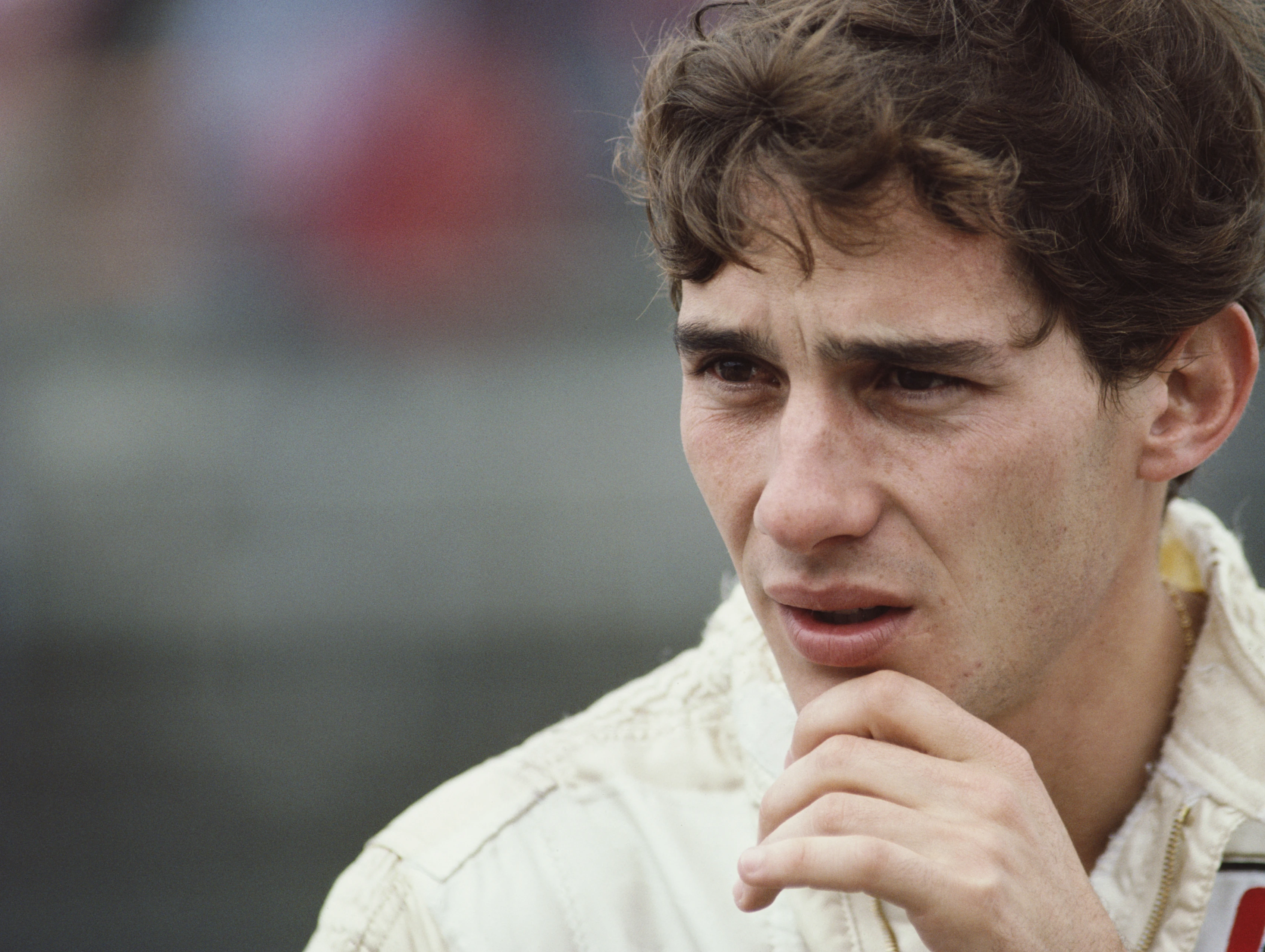
Black and gold to bold at Lotus (1985-1987)
With Lotus came a subtle step into the limelight, as Senna was no longer the newcomer. Wins began to stack up, and his look sharpened with them. The black and gold livery of his car gave Senna a sleek visual stage, and his off-track appearance began to reflect sophistication.
His hair grew slightly longer, his confidence more visible, and the contrast between his boyish smile around the paddock and steely race-day expression became a defining part of his image.
As the team introduced a bold yellow and blue livery in 1987, the new colours transformed his on-track image, giving him a more vibrant presence on the grid, and perfectly matching the tones of his signature helmet. While his off-track style remained understated, the combination of yellow and blue planted the seeds of a visual identity that would soon become one of the most recognisable in Formula 1 history...
The defining look at McLaren (1988-1993)
Senna’s move to McLaren in 1988 marked the start of a golden era. Three world titles followed in four seasons, each shaped by an intensity that demanded perfection from man and machine. Even in rain-soaked battles, he was untouchable.
Meanwhile, in line with McLaren’s iconic white and red livery of the 80s and 90s, Senna’s looks became instantly his most famed. Off-track, he adopted a confident yet effortless style in many forms: brightly coloured polo shirts or soft knit sweaters, crisp button-ups, tailored denim, sunglasses, and a signature TAG Heuer on his wrist. Favouring quality over flash, Senna chose pieces that were timeless rather than trendy.
Most notably, this was also the era when the, now iconic, blue Nacional cap first appeared. What started as a gift from his personal sponsor, Senna quickly adopted the accessory as part of his identity. Worn in the paddock, on the podium, and in countless photographs away from racing, it quickly became inseparable from his image.
These looks were donned by Senna at his most formidable, he was mastering the sport while crafting an image that was recognisable around the globe.
Enduring style at Williams
In 1994, now with Williams, Senna remained the sport’s benchmark for skill and determination. His style had fully crystallised, his relaxed off-track appearance with polo shirts, crisp jeans and casual loafers, reflected his Brazilian roots.
By this point, the blue cap was still ever-present, a thread linking his final chapter to his glory years at McLaren. It was barely recognised as a sponsor’s logo by then; it was part of his armour, the familiar splash of blue that fans around the world still associate with the man himself.
At Imola, tragedy struck, ending the life of a man whose impact would ripple far beyond Formula 1. In those last images, Nacional cap in place and expression calm, he embodied everything he had always been; precise, purposeful, and unforgettable.
His influence endures, not only in racing’s record books but in the way he showed the world what it means to live and compete with style.
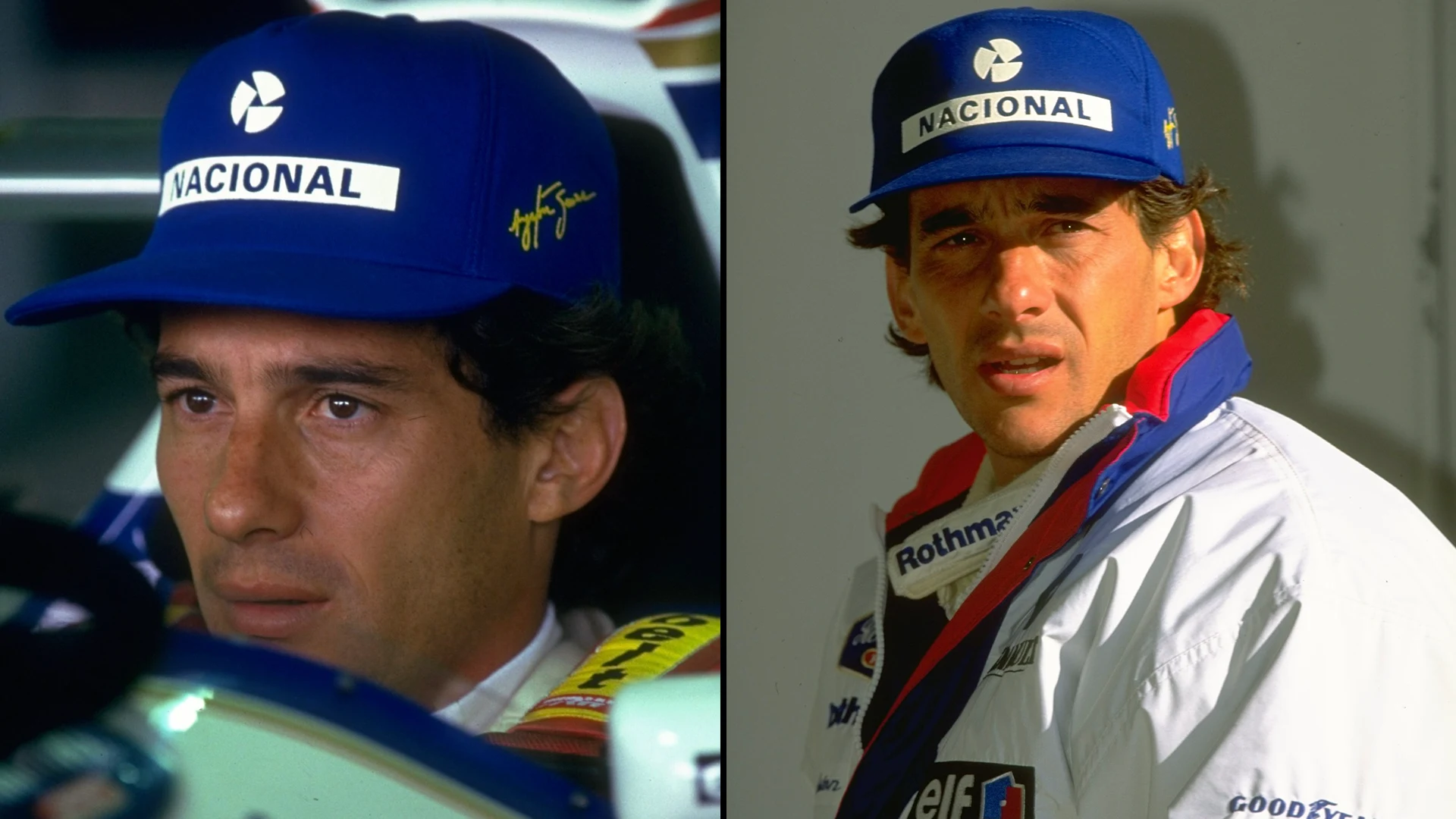
Senna’s continuing style influence
Senna’s iconic yellow helmet that he wore throughout his career remains one of the most recognisable in motorsport history. The influence of the blue and green stripes is still felt within the grid decades later.
Drivers across generations have paid tribute to the legend by adopting versions of the design. Tribes from the current grid include that of Lewis Hamilton, who has called Senna his idol and worn special editions and outfits in Brazil to honour him. Hamilton’s deep admiration was solidified in 2024 when he drove Senna's championship-winning McLaren at the Sao Paulo Grand Prix, followed by a warm gesture with the late Brazilian's family that reflected their appreciation for Hamilton’s enduring support.
This season, Isack Hadjar ran a Senna-inspired helmet at the 2025 Monaco Grand Prix, a vivid reminder that Senna’s presence and influence has remained in the paddock long after his passing.
The helmet of Gabriel Bortoleto – Brazil’s current star on the grid – also draws influence from his fellow countryman, a yellow base with flashes of green and blue.
Next Up
Related Articles
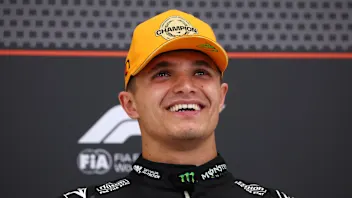 Norris hopes title win doesn’t change him as a driver
Norris hopes title win doesn’t change him as a driver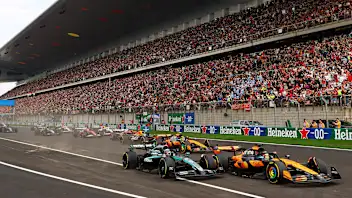 Tickets on sale for 2026 Chinese Grand Prix
Tickets on sale for 2026 Chinese Grand Prix Norris confirms he will use car number 1 next season
Norris confirms he will use car number 1 next season This Week in F110 quiz questions on the Abu Dhabi title decider
This Week in F110 quiz questions on the Abu Dhabi title decider Beyond The GridToto Wolff and Hywel Thomas on Mercedes’ 2026 prospects
Beyond The GridToto Wolff and Hywel Thomas on Mercedes’ 2026 prospects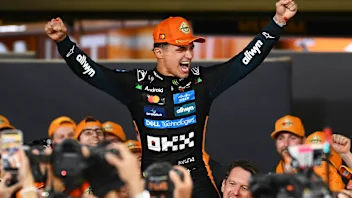 All the key stats from Norris’ title-winning season
All the key stats from Norris’ title-winning season